The Winter NAMM Show (January 21-24 2016) is the largest musical instrument trade show in the world and it's going to become a lot more interesting for software developers this year. NAMM stands for the National Association of Music Merchants, and specifically their mission is to promote the selling of music products through retailers, so it should be great news to software vendors that they are getting more involved with the software segment.
It's no secret that software sales have become less relevant at the retail level in the past 5-10 years, and there are a lot of reasons for this. In the early days (80s and 90s) NAMM was a little slow to grasp the significance of software sales, massive piracy has reduced profits for software companies, and more recently unnecessary commoditization has eroded prices. On top of that the Internet makes it easy for a company to sell software directly to a customer.
Software.NAMM is a partnership between NAMM and the International Music Software Trade Association (IMSTA) to provide an exhibit environment at the Winter NAMM Show dedicated to the music software community. So, why does NAMM think that now is a good time to reach out to software vendors...?
Here's what NAMM has to say:
As the music products and software development sectors continue to collaborate to create new products, applications and solutions for people to make, record and experience music, it is important to provide a platform for these communities to gather to connect and share ideas.
While many software solutions can be evaluated through digital devices, nothing tops face-to-face communication and a hand-shake. Trade Shows still provide the most efficient method of having this human interaction. The NAMM Show is the most important destination for the music products, pro audio, and sound recording industry and for the first time IMSTA members will have the opportunity to participate effectively by showcasing their solutions to a variety of retailers, manufacturers, developers and industry professionals.
What follows is an interview with Ray Williams, founder of IMSTA. He has been the driving force in putting together the collaboration with NAMM.
How did you found IMSTA and what was your thinking at the time?
We started IMSTA in 2002 to address software piracy. The idea was very simple. At the time I was working with Steinberg and between us and our competitors we spent millions every year on dongles and other forms of software protection. From my perspective it was like some kind of policing action, instead of an effort to educate people about the negative effects of piracy.
Kind of like being forced to penalize all of your customers because of the actions of a small minority...
I look at it like the war on drugs. If you spend all your effort chasing the drug cartels and not working on the demand side you're only addressing half the problem. So, with IMSTA we're not only trying to stop the pirates. We are trying to educate people in order to reduce the demand for pirated software. In our mind IMSTA would be successful if every piece of software had been pirated, but nobody wanted to use those versions.
How did the collaboration between IMSTA and NAMM come about?
We've been trying to make this happen for years. Joe Lamond has recently attended some of our meetings, so we're really happy about the direction. There was a general consensus among developers both large and small that strategically it would be a mistake for the software sector to simply vanish from the largest musical instrument trade show in the world. In 2014 we had a meeting of the minds and agreed that we should make an effort to be more visible at the 2016 Winter Show in LA.
Joe Lamond (CEO of NAMM) says:
"We are committed to providing NAMM attendees with a 360 degree look at the industry, including emerging new technologies and trends that will influence how people make and experience music. Software.NAMM will provide a one stop location to review dozens of new application solutions, offering our members access to new products, ideas, contacts and career opportunities. The partnership with IMSTA is a great extension, as it will help create new business opportunities for the audience bases of both organizations and allows us to welcome IMSTA members into the global NAMM community."
What do you think is good about the current trends with in the software market?
The software market has been expanding and that's very good. More and more people are using software to do things that we never imagined. Guitar players are using software to control guitar amplifiers. People are using software on tablets to make music. It's everywhere. It's the lifeblood of the music production business. Say you are a drummer and you're spent your life working on your craft, if you want to collaborate with a band you need to get some software and run it on a computer. Everybody in the band needs some kind of recording software. That's the way things are now, and they way I believe they will remain into the future, and I think it's great.
What is not so good?
That's an interesting question. There are still people who pirate software. We don't see the point in trying to sue them or prosecute them. We just think software users need to be aware of just how much software piracy hurts their own ability to make music in the long run. That's the whole idea of IMSTA.
What do you believe is the problem with software at retail these days?
At retail over the last 5-10 years software have been diminishing as a presence. If you went into a Sam Ash store 10 years ago you would see large displays of software from a diverse group of companies that you don't see now. In the last few years especially a lot of retailers have made the assumption that people will just buy the software directly from the manufacturer. And this isn't just the music industry. It's same if you go into a Best Buy or a Walmart. There's been a shift away from retail with digital goods in general. Some people have given up because they think it's irreversible, but we don't believe that.
At the point of sale there are issues as well. Demonstrating the difference between a Stratocaster and PRS is a lot easier and better suited to a bricks and mortar outlet than trying to explain the difference between Pro Tools and Ableton Live. It's difficult for even a well-trained staff to keep up with all the changes, especially at the larger retail chains. Ultimately that means that they will only offer the most popular applications.
Given what you say, it follows that all of the product pre-sale investment has to come from the developer. And, speaking from a developers point of view, if you have to make all the effort to build a website to attract people to your product, why not just sell the product while the customer is there?
That's the big question. First, even the biggest software vendor's websites don't have the same quality of visits that retailers do. 120,000 people visit stores within the Guitar Center chain every day, looking for some kind of music product. That's a huge opportunity for any musical instrument supplier.
A good analogy is if you have a band and you set up a Facebook page, a website, twitter, etc. Technically everyone in the world with an Internet connection can view your page, learn about your band and ultimately buy your music or attend your concert. The reality is that you won't actually get everyone in the world with an Internet connection to visit your page. In fact, the vast majority of people in the world will not know about you. If you get a distribution deal with one of the major record labels more people will hear about you because the infrastructure is much larger and more efficient.
If a developer has the greatest plug-in in the world this does not automatically mean that lots of people will buy it. They need to have exposure. You can't ignore the infrastructure for exposure that's already in place for decades. You can still maintain your web shop and company direct sales infrastructure but you are only reaching a small subset of the world.
Most retailers are specialists in selling. Good resellers provide A/B comparisons, loads of selection from different companies, and the customer's transaction is handled in a secure and familiar way. Customers can buy products from different suppliers in the same transaction, same website, and in the same shopping cart. That is hard to beat.
How will Software.NAMM address the issues from the developer's point of view?
This is the first year, and we have limited it to a small number of developers. The real verdict will be 4 or 5 years down the road when the concept is more entrenched. Every major retail buyer attends NAMM, so you have everybody in one place at the same time. NAMM will be encouraging all these retailers to visit Software.NAMM. And there they will discover things that they were not aware of before. That's significant as a start. And projecting over the next five years down the road there is no doubt in my mind that this space and will grow much, much larger and become a major highlight of NAMM.
What kind of developer can take the best advantage of what NAMM is offering?
Smaller developers are the one who can benefit the most. Obviously if you are Native Instruments or Avid you don't necessarily need this kind of exposure, but for the smaller companies who are not yet in that position it's perfect. It will be a plug and play environment, so all they need to do is bring a laptop and TV monitor. Everything else will be provided. Headphones, controllers, electricity, signage, it will all be there.
For medium sized companies it's also great because it's a huge saving over what it would normally cost to exhibit at NAMM. They will be able to use the space as a quiet base environment to do their demos, and meet more retailers.
How can a new developer best put themselves in a position to take the best advantage of trade shows in general and Software.NAMM in particular?
It's a little bit different than the recording industry. You need to make a great product. Then you need to put together some compelling marketing content. If both these things are true then you can exhibit at Software.NAMM and get your product into the retail infrastructure with systems like XCHANGE and VSSD. You still have to work hard to fan the flames and promote the products in the channel but it's a lot easier than it was 10 years ago because of the digital delivery opportunities.
IMSTA's tagline is: "Buy the Software You Use".
Creating a DAW like Pro Tools, or sample library platform like Kontakt, a drum platform like Superior, or a big software synth like Zebra is a huge undertaking. It's as much or more effort than what goes into the development of MS Excel, but there aren't 10s of millions of people to sell it to, just us musicians. The best way to support your efforts to make music with software is to buy the software you use.
Some more about Software.NAMM:
Software.NAMM will be located in Room 201 C and D on the second floor of the NAMM campus, directly above Hall A. The space is designed to enable developers to see quality demonstrations of a number of applications with a series of exhibits organized around multi-headphone listening stations in a focused learning environment. Software.NAMM developers will be able to take advantage of the NAMM Show, visit with more than 5,000 brands and connect with their community within the global marketplace that gathers in Anaheim each year.
Developers also will be able to take advantage of TEC Tracks, over 70 sessions dedicated to sound, studio and stage professionals, including discussions led by game audio gurus Steve Horowitz and Scott Looney, best-selling authors of "Essential Guide to Game Audio: The Theory and Practice of Sound for Games". Software applications also will be a focus during A3E's future of audio track, with sessions dedicated to outlining how iOS developments will usher in a new era for mobile music technology.
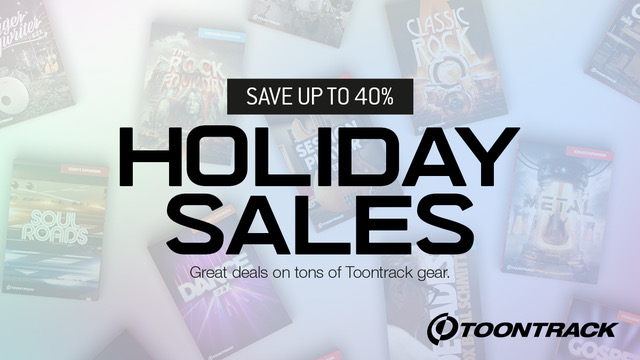

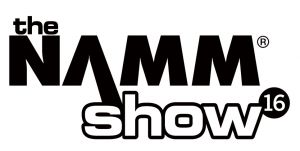


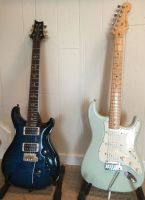
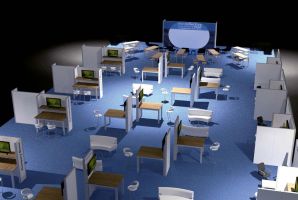
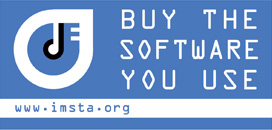
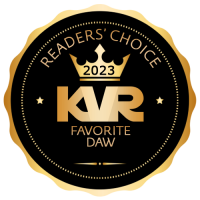
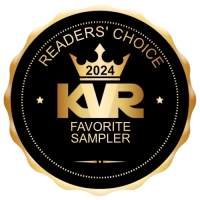
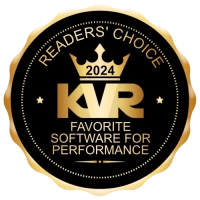
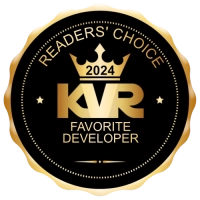

 Other Related News
Other Related News